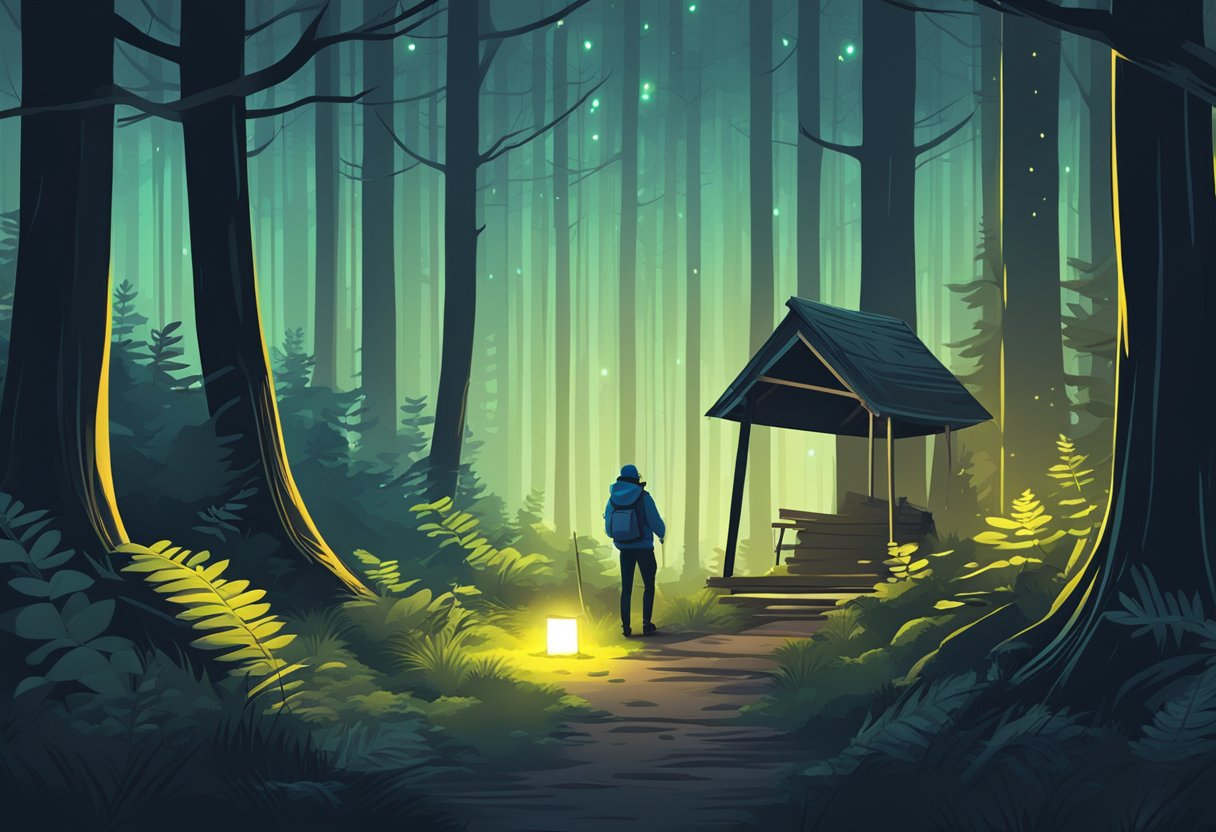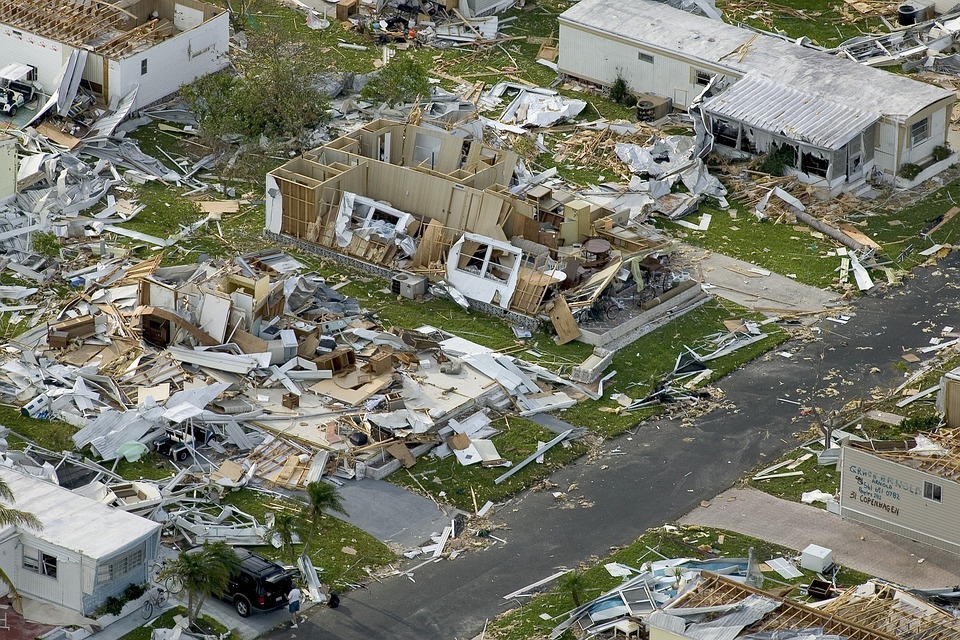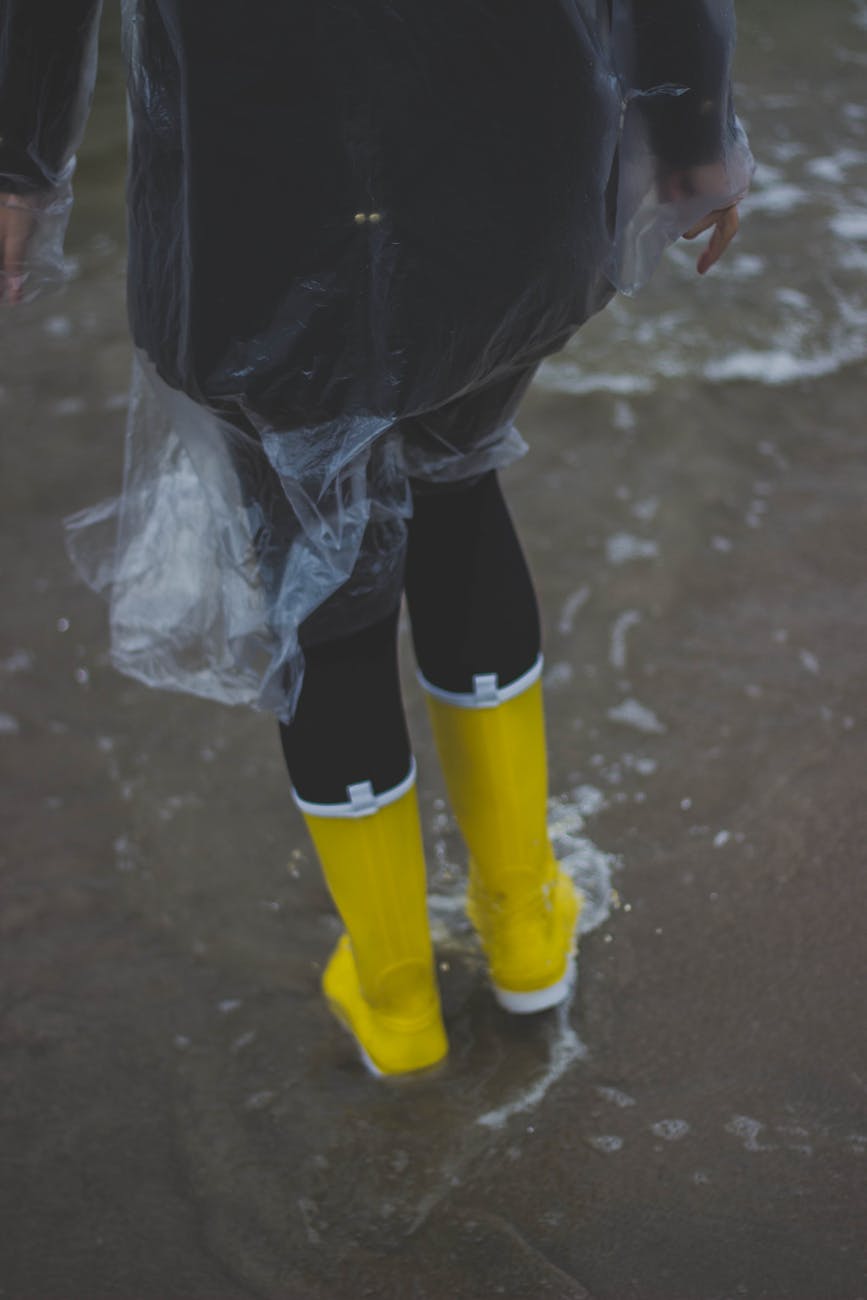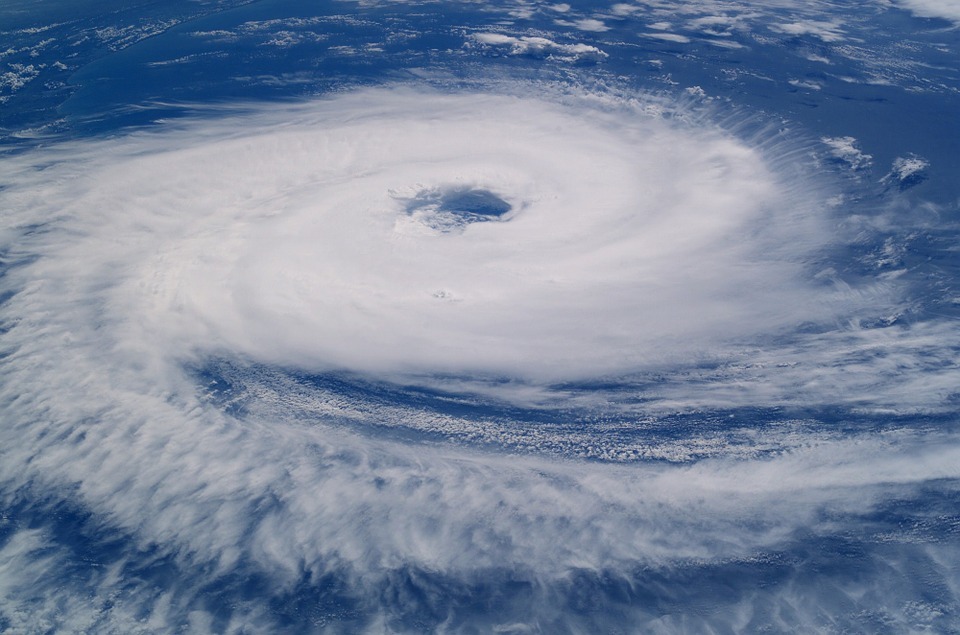Guide to Using Glow Sticks in a Survival Scenario: Essential Tips and Techniques

Glow sticks can be lifesavers in a survival scenario. Whether you find yourself lost in the wilderness or facing a power outage, these handy items provide reliable illumination. In emergency situations, the best glow sticks can offer up to 12 hours of continuous light, ensuring you won't get caught in the dark. Their versatility makes them an essential part of any survival kit.
One practical use for glow sticks is making a lantern. Activating a glow stick, pouring its contents into a jar, and adding water can create a bright and useful light source. This can help you see clearly and stay calm during stressful situations. Glow sticks are also great for attracting insects, which can be used as bait in traps or even for fishing.
In addition, glow sticks are waterproof, non-flammable, and non-toxic. This makes them safe and dependable in various conditions. For anyone preparing for emergencies, having a stash of glow sticks can make a significant difference in a survival scenario.
The Basics of Glow Sticks
Glow sticks are a crucial addition to any survival kit. They work through a chemical reaction, come in various shapes and sizes, and have a long shelf life.
Understanding Glow Stick Mechanics
Glow sticks light up because of a chemical reaction. When you bend a glow stick, it breaks a small inner glass capsule. This allows two chemicals to mix: a hydrogen peroxide solution and a phenyl oxalate ester.
This reaction releases energy and excites the dye, producing light. Glow sticks are safe and non-toxic. The light they emit can last for several hours, making them invaluable in dark situations.
Types and Varieties of Glow Sticks
Glow sticks come in many types, sizes, and colors. Tube style glow sticks are the most common, typically ranging from 1.5 inches to 22 inches.
Rope style glow sticks are more flexible and can be bent into different shapes. Additionally, there are industrial-grade glow sticks, which are brighter and last longer. Choosing the right type depends on the situation; for example, longer glow sticks are better for marking pathways.
The Shelf Life and Durability of Glow Sticks
Glow sticks have a long shelf life, typically around five years. This makes them ideal for emergency kits as they can be stored for long periods without losing effectiveness.
They are durable and waterproof, which means they can function in harsh weather conditions. However, extreme temperatures can affect their performance. Keeping them in a cool, dry place will help ensure they last as long as possible.
Glow Sticks vs. Traditional Lighting Options

Glow sticks have unique advantages and disadvantages when compared to traditional lighting options like flashlights and candles. Key areas of comparison include brightness, longevity, safety, and environmental considerations.
Comparing Brightness and Longevity
Glow sticks provide illumination for up to 12 hours, which is useful for all-night situations. In contrast, flashlights often depend on batteries that can deplete quickly, requiring spares for extended use. Flashlights generally offer brighter light, while glow sticks emit a softer, uniform glow.
Candles, while offering good ambient light, last only a few hours and can be affected by wind. Glow sticks operate consistently regardless of weather conditions. This makes them reliable for outdoor use, especially in survival scenarios.
Safety and Environmental Considerations
Glow sticks are non-flammable, making them safer than candles which pose fire risks. This is crucial in survival settings where open flames can be hazardous. Flashlights, which require electricity or batteries, can be a safer alternative but depend on battery availability.
From an environmental perspective, traditional glow sticks are not eco-friendly. The chemicals and plastic used can be harmful if not disposed of properly. Eco-friendly versions exist but are less common. Flashlights, particularly rechargeable ones, are a more sustainable choice if energy-efficient and well-maintained.
Strategic Uses of Glow Sticks in Survival Scenarios

Glow sticks are vital in survival kits for their reliability, ease of use, and versatility. They provide essential illumination, help signal for rescue, and can mark paths and danger zones effectively.
Emergency Illumination
In survival situations, emergency glow sticks offer immediate lighting without any need for batteries. They are lightweight and portable, making them an ideal choice for emergency kits. With options like 24-hour glow sticks, a person can have continuous light throughout the night. These sticks can illuminate tents, campsites, or any dark areas, helping to reduce the risk of injury. Their long shelf life ensures they are ready whenever needed.
Signaling for Help
Glow sticks are excellent for signaling when in distress. They can be seen from far distances in the dark, making them a handy tool for alerting rescuers. Attaching a glow stick to a piece of string and swinging it in a large circle creates an effective signal that can catch attention from miles away. Colors such as red or green are particularly noticeable and often used by military and rescue teams for this purpose.
Marking Trails and Hazards
When navigating through areas with poor visibility, marking trails with glow sticks ensures that a person doesn’t lose their way. Tying glow sticks to trees or placing them along pathways acts as a visual guide. Additionally, they can mark areas with potential hazards, such as cliffs or rough terrain, preventing accidents. For tactical advantages, different colors can be used to signify different types of warnings or directions.
Optimal Conditions for Glow Stick Use

Glow sticks are extremely useful in survival scenarios, but their effectiveness depends on certain conditions. Understanding these factors ensures you get the best performance from your glow sticks.
Temperature and Light Output
Temperature significantly affects the brightness and duration of glow sticks. Higher temperatures cause the chemical reaction inside the glow stick to speed up, leading to brighter light but for a shorter duration. For instance, on a hot day, a glow stick may shine very brightly but might only last a few hours.
On the other hand, lower temperatures slow down the reaction. A glow stick used in cold weather will emit less light but for a longer time. Therefore, in cold environments, glow sticks will be less bright but could last through the night. To optimize performance, industrial-grade glow sticks are recommended for their consistent brightness and longer-lasting glow.
Water and Weather Resistance
Many glow sticks are designed to be waterproof, making them suitable for use in wet conditions like rain, snow, or even underwater. This feature is crucial for survival scenarios where you may face unpredictable weather.
Glow sticks can function even when submerged in water, providing reliable light in rainy or wet environments. Industrial-grade glow sticks are particularly effective as they are built to withstand harsh conditions, ensuring they don't break easily and continue to provide illumination.
When selecting glow sticks, check the packaging or product specifications to confirm their weather-resistant properties. This ensures that the glow sticks will perform well even in challenging conditions.
Glow Sticks for Navigation and Campsite Management

Glow sticks are practical tools for both navigating in the dark and managing a campsite. They can help create safe paths and keep the campsite organized, making them essential for any survival kit.
Creating Secure Paths
When camping, marking trails and paths is crucial for safety. Glow sticks can be tied or hung along trails to create a clear path to and from the campsite. This is especially useful at night when natural light is unavailable.
Markers for important spots, like a latrine, help prevent accidents. Glow sticks can also be used to highlight hazards like drop-offs or uneven terrain.
For extended use, opt for long-lasting glow sticks, such as industrial-grade ones that provide light for up to 12 hours. They are durable and ideal for long nights in the wilderness.
Organizing the Campsite
Using glow sticks to organize the campsite can prevent confusion and accidents. Attach glow sticks to tents and gear for easy identification in low light conditions. This helps campers quickly find their belongings without disturbing others.
Glow sticks make excellent lantern substitutes. Insert a glow stick into a mason jar to create a makeshift lantern that can be placed in communal areas. This is a safe alternative to open flames.
Glow sticks can also be used to mark important areas like the campsite's cooking area, making late-night tasks simpler and safer. They can help create visually distinct zones within the campsite, ensuring everything is easy to find even in darkness.
Survival Kits and Preparing Glow Sticks
Glow sticks are vital in a survival kit. They provide reliable, non-toxic light in emergencies and are lightweight and compact. Here’s how to select and pack them for the best use.
Selecting Glow Sticks for Kits
When choosing glow sticks for a survival kit, it's important to consider duration and brightness. Emergency glow sticks generally last between 8 to 12 hours, which offers sufficient light for overnight situations. Opt for industrial-grade sticks, as they are more durable and provide consistent illumination.
A variety of colors can also be useful for different signaling purposes. Some colors are brighter or last longer, which could be critical in various survival scenarios. For instance, green glow sticks often have the longest-lasting glow.
Check the shelf life of the glow sticks. Typically, they last several years unopened. Ensure you pick sticks with a long expiration date to maximize their utility in a survival kit.
Practical Packing for Emergencies
The way glow sticks are packed in a survival kit can make a significant difference. Compact and lightweight glow sticks fit seamlessly into any space, making them excellent for tight packing situations.
Individual wrapping can protect them from accidental activation. Some glow sticks come with clips or lanyards, which are practical for hanging inside a tent or attaching to clothing.
Store glow sticks in a waterproof container to safeguard them from moisture, which could potentially damage or prematurely activate them.
A good practice is to include a variety of glow sticks in your kit. This could mean having a mix of long-lasting and brighter sticks, as well as several colors. Include instructions on how to use them effectively, especially if the kit will be shared.
Military Applications of Glow Sticks
Glow sticks play a vital role in various aspects of military operations, from tactical missions to training exercises. They provide reliable, non-electric light solutions that ensure safety and effectiveness in the field.
Tactical Use in Military Operations
Glow sticks are essential in tactical military missions. They come in multiple sizes and colors, each designed for specific uses. 2-inch glow sticks are perfect for marking equipment and paths without compromising night vision.
- 4-inch and 6-inch glow sticks provide more light, aiding in signaling and marking clearer paths.
- Larger sizes like 12-inch and above offer substantial illumination for landmine marking and significant signaling requirements.
In operations, glow sticks help maintain covert communication. Infrared (IR) glow sticks, invisible to the naked eye but visible through night vision equipment, are used for undetected signaling and tracking.
Training and Utility in Field Exercises
In training and field exercises, glow sticks are indispensable. They are included in first aid kits and survival packs due to their robustness and ease of use. These chem lights withstand extreme temperatures, operating effectively from -50°F to +150°F.
Military training often requires simulated environments. Cyalume chem lights provide realistic lighting conditions for night drills. They help trainees navigate and perform tasks in low-light conditions.
- Signal Training: Different glow stick colors train recruits in color-coded signal recognition.
- Marking Boundaries: Use glow sticks to mark safe zones, obstacle courses, and boundaries in training exercises.
Glow sticks ensure that military personnel can effectively train and operate under various conditions without relying on electricity, making them a crucial part of military preparedness.
Alternative Uses of Glow Sticks
Glow sticks offer numerous possibilities beyond just survival lighting. They can enhance recreational activities and can be used creatively in various scenarios.
Recreational Activities and Games
Glow sticks are perfect for parties and nighttime games. Ring toss and glow bowling can be played by arranging glow sticks in different setups. Tying glow sticks to tent poles and stakes helps avoid tripping over them at night.
They can serve as night lights inside tents, providing a soft glow that helps prevent accidents. Lastly, glow sticks can light up areas like latrines or pathways, ensuring safe navigation in the dark.
Other Creative Uses
For bathtime fun, place glow sticks in the water for a magical touch. This makes bathing more enjoyable for children. In survival situations, glow sticks can boost morale by adding a bit of light and color to a dark environment.
Glow sticks can be used as partysticks to create a festive atmosphere. Making glow-in-the-dark bubbles is easy by adding glow stick liquid to bubble mix. Be careful not to get the liquid on your skin.
Practical Tips for Glow Stick Use
Glow sticks can be essential in a survival scenario, providing reliable light and multiple uses. Knowing how to maximize their efficiency and staying safe when using them is crucial.
Maximizing Light Output
To make the most out of a glow stick's brightness, shake it well after activating to mix the chemicals evenly. This ensures optimal light diffusion. For extended light, consider placing the glow stick in a refrigerator before use. Cold temperatures can slow down the chemical reaction, making the glow last longer.
Creating a makeshift lantern can also extend light coverage. Cut off one end of the glow stick, pour the contents into a mason jar, and shake. Add water and screw the lid back on. This helps spread the light more evenly, creating a brighter area.
Safety Precautions
Though glow sticks are non-toxic, avoid contact with the liquid inside, especially around children. If the glow stick cracks or leaks, wash the affected skin with soap and water. Keep glow sticks out of reach of young children who might chew on them.
When using glow sticks near water, ensure they are waterproof. Most glow sticks can withstand short-term exposure, but prolonged submersion might affect performance. Some glow sticks also contain dye that can stain clothes or skin, so handle them carefully.
Always keep glow sticks in a cool, dry place to ensure they remain effective when you need them most. For camping or emergency kits, consider industrial-grade glow sticks, as they typically last longer and are more durable.
Selecting the Right Glow Stick for Your Needs
Choosing the ideal glow stick involves considering factors like size, color options, and durability. These features play a crucial role in ensuring the glow stick meets your needs in a survival scenario.
Size and Color Variations
Glow sticks come in various sizes, typically ranging from 4 to 12 inches. Smaller sticks are portable and fit easily into a survival kit, while larger sticks provide more light. 6-inch sticks are often a good compromise.
Color is important for visibility. Green is the brightest and longest-lasting, making it a top choice. Other colors like red and yellow are also popular. It’s wise to carry a variety of colors to signal different messages.
Durability for Various Scenarios
Durability is essential in survival situations. Industrial-grade glow sticks are a reliable choice, as they can withstand harsh conditions including exposure to heat and wind. Waterproof options are crucial for wet environments.
Quality glow sticks are also non-flammable and non-toxic, enhancing safety when used indoors or around children. Having glow sticks that maintain their light for at least 12 hours ensures they stay functional through the night.
Purchasing and Storing Glow Sticks
Choosing the right glow sticks and storing them correctly can ensure they work when you need them most. Focus on finding reliable sources and using proper storage methods to extend their shelf life.
Best Places to Buy Glow Sticks
There are several places to purchase glow sticks, both online and in physical stores. Amazon is a popular option due to its wide range of choices and customer reviews. They offer bulk packs, which can be more cost-effective.
Local dollar stores also sell glow sticks. While often inexpensive, check reviews or test a few to ensure they meet your needs. Walmart and Target are other stores with a decent selection, often featuring budget-friendly options.
For higher-quality, industrial-grade glow sticks, consider specialty survival or outdoor stores. These glow sticks are generally more durable and provide longer-lasting light, making them ideal for emergency kits.
Long-Term Storage Tips
Proper storage is crucial for glow sticks to maintain their effectiveness. Store them in a cool, dark place, away from direct sunlight. Heat can shorten their shelf life and reduce brightness. Using a sealed bag or container can help protect them from moisture.
Label storage containers with the purchase date to keep track of the age of the glow sticks. Rotate and replace older ones as necessary. High-quality glow sticks can last for 4-6 years if stored correctly, ensuring they are ready when you need them.
Avoid storing glow sticks in areas with extreme temperatures, such as attics or car trunks. Optimal storage conditions will help maintain their performance for emergency use.
Handling and Disposal After Use
Proper handling and disposal of glow sticks are key for safety and environmental protection. This section covers how to safely disassemble and clean used glow sticks, and how to dispose of them in an eco-friendly manner.
Proper Disassembly and Cleaning
When a glow stick has been used, careful disassembly is crucial. Do not cut or break the glow stick unless necessary, as this can expose hazardous chemicals like Phenyl Oxalate and fluorescent dye. Avoid skin contact with these substances. If you must handle the contents, wear gloves and work in a well-ventilated area.
Use warm, soapy water to clean any spills. If the liquid touches skin, rinse immediately with plenty of water. For clothing or gear, pre-treat and wash the affected area thoroughly.
Environmentally Safe Disposal
Glow sticks are chemical-based, so proper disposal is important. Do not throw used glow sticks in regular trash. Instead, collect them in a separate container and follow local guidelines for hazardous waste disposal.
Some communities offer hazardous waste collection services that accept chemical-based items. Look for eco-friendly or non-toxic glow sticks, as they are easier to dispose of and better for the environment.
If available, choose biodegradable options to lessen environmental impact. By taking these steps, you help ensure that glow sticks are disposed of safely and responsibly.
Troubleshooting Common Glow Stick Issues
Glow sticks are useful in survival situations, but sometimes issues can arise. Common problems include fading light and leakage. It is important to know how to deal with these issues to ensure safety and reliability.
Fading Light and Color
One common issue with glow sticks is fading brightness. This can happen if the chemical reaction inside the stick slows down. To extend the light's duration, try storing glow sticks in cooler conditions before use, as heat can accelerate the chemical reaction.
If the glow stick stops glowing too soon, it might be due to low-quality chemical dye or poor manufacturing. It’s always a good idea to invest in high-quality, industrial-grade glow sticks for better durability and brightness.
If you find that the light fades quickly after activation, gently shaking the glow stick can sometimes help. This can mix the chemicals more evenly, giving a brighter and longer-lasting light.
Leakage and Containment
Glow sticks can sometimes leak, which poses a safety risk if the chemicals come into contact with skin or eyes. If you notice any punctures or cracks, it’s best to dispose of the glow stick safely.
Leaks can often result from rough handling. Keep glow sticks in a protective case or wrapper when transporting them to avoid accidental punctures. This is especially important in harsh environments like bug-out bags or survival kits.
If a glow stick does break, clean the affected area with soap and water immediately. Avoid contact with eyes and mouth, and safely dispose of any leaking stick.
Safety should always be a priority. Ensuring proper storage and handling can prevent most leak-related issues.




